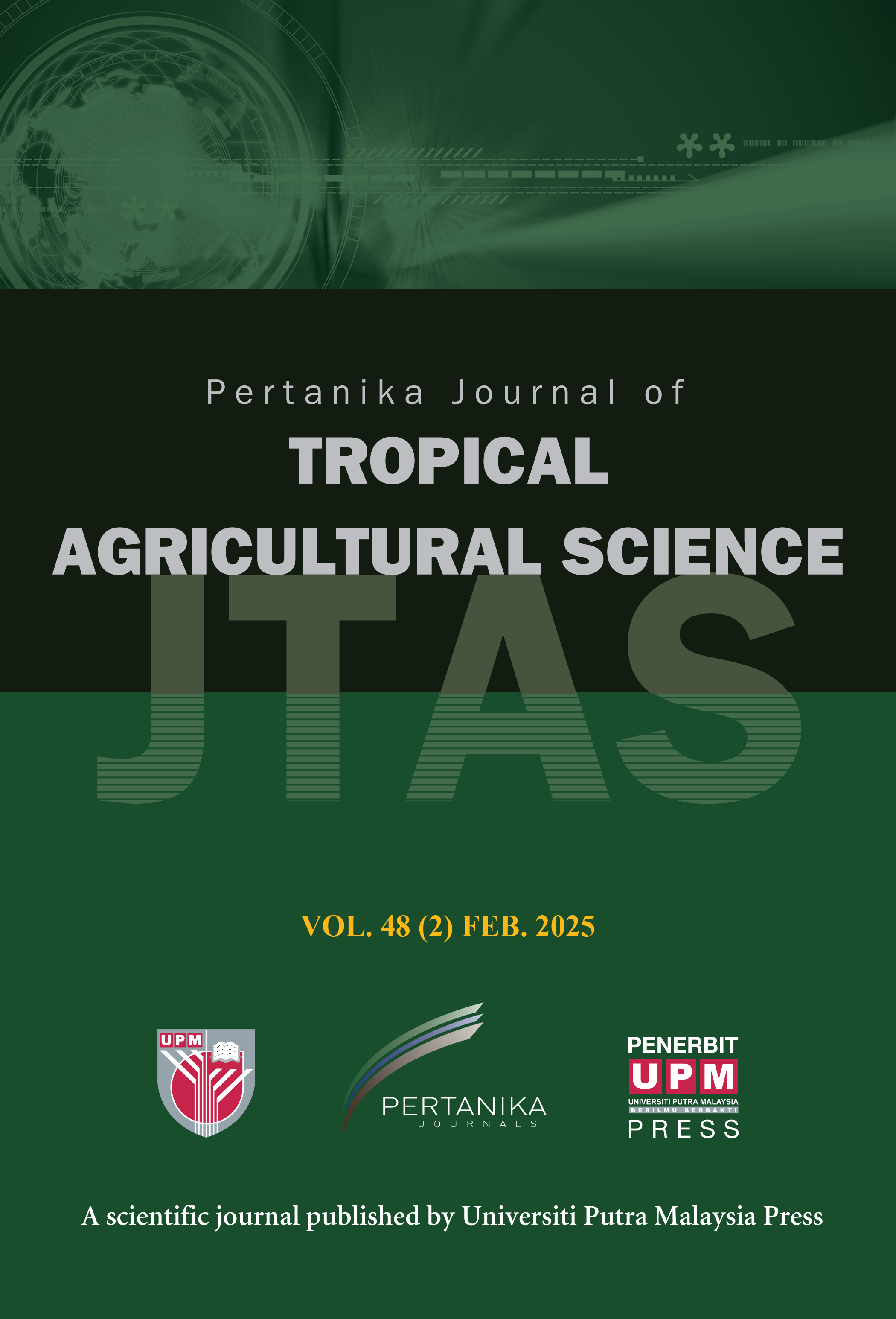PERTANIKA JOURNAL OF TROPICAL AGRICULTURAL SCIENCE
e-ISSN 2231-8542
ISSN 1511-3701
Incorporation of a Preservative in Particleboard: Properties and Durability
Zaidon, H. Rayehan, M.T. Paridah and M.Y. Nor Yuziah
Pertanika Journal of Tropical Agricultural Science, Volume 21, Issue 2, September 1998
Keywords: Particleboard, Urea formaldehyde, Hevea brasiliensis, Boric acid, Durability, Retention, Pycnoporous sanguineus
Published on:
0.5% and 1.0% (w/w) of boric acid (H3BO3) were incorporated in rubberwood (Hevea brasiliensis) particleboards either by initially mixing the boric acid powder with urea formaldehyde adhesive or spraying boric acid solution onto the furnish during blending. Two types of urea formaldehyde, i.e. E1-glue (maximum permissible formaldehyde emmision < 0.1 ppm) and E2-glue (maximum permissible formaldehyde emmision 0.1-1.0 ppm) were used as the bonding agent. The targeted density of the boards was 650 kg/m3. The board properties and durability against white rot fungus were evaluated in accordance with JIS A 5908-1983 and ASTM D2017-71, respectively. The chemical loading in the board was in the range of 0.42-0.47% and 0.64-0.70%, respectively when 0.5% and 1.0% of boric acid (based on the dry-weight of the particles) were incorporated in the boards. The dry modulus of rupture (MOR), dry modulus of elasticity (MOE) of the boric acid-treated boards were significantly reduced. The reduction of the properties increased as the chemical loading in the treated boards increases. However, wet MOR and wet MOE, internal bonds (IB) and thickness swelling (TS) of treated boards at both concentration levels did not differ significantly compared to the untreated boards. Particleboards bonded with E2-glue were more resistant to white rot fungus (Pycnoporous sanguineus) than those bonded with El-glue. The presence of boric acid significantly increased the durability of board against white rot fungus, and the resistance towards the fungus increased as the boric acid loading increases.
ISSN 1511-3701
e-ISSN 2231-8542




